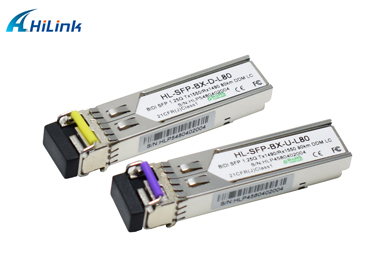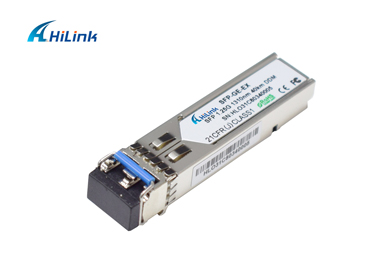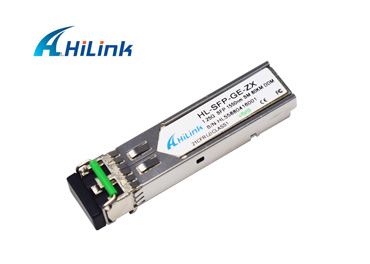What is the Difference between GBIC Modules and SFP Modules?
Jan. 05, 2023
GBIC and SFP modules are both transceivers that are hot-pluggable, meaning they can be loaded into and out of a working telecommunication switch without the need for powering down. They are used to convert optical and electrical signals.
GBIC stands for Gigabit Interface Converter and SFP stands for Small Form-factor Pluggable. Although relative models of each technology are equal in performance, SFPs are generally considered as an upgraded version of a GBIC module, because they are smaller. It’s also why you may also hear SFPs being referred to as mini-GBIC’s. SFP’s being more compact is beneficial because the larger size of a GBIC module means that you can fit less into a line card or switch.
1.25G BIDI SFP 80KM
What are SFP’s and why are they used in telecommunication systems?
SFP’s are small optical module transceivers that are hot-pluggable (meaning they can be plugged in and out of a system without the need for shutting it down) and are used in telecommunication and data communication applications. They offer a simple and effective way to connect a single network device to a wide variety of fiber cable types and distances, by converting the serial electrical signals to serial optical signals and vice versa.
Due to their more compact size, SFPs have replaced gigabit interface converters (GBIC’s) in most modern applications (because of this they are sometimes referred to as “mini-GBIC’s”. By selecting the appropriate SFP module, the same electrical port on the network switch can connect to fibers of different types (multimode or single-mode) and different wavelengths. They offer a simple and effective way to connect a single network device to a wide variety of fiber cable types and distances, by converting the serial electrical signals to serial optical signals and vice versa.
1.25G 1310NM 40KM SFP
By selecting the appropriate SFP module, the same electrical port on the network switch can connect to fibers of different types (multimode or Singlemode) and different wavelengths. SFP modules can be classified based on the working wavelengths and the working distance.
Types of SFPs:
Multimode Fiber
SX (Short reach) 850nm wavelengths
Reach (the distance that SX modules support):
550m at 1.25Gbps (for Gigabit Ethernet)
150m at 4.25Gbps (for Fiber Channel)
1.25G 1550NM 80KM ZX SFP
Singlemode Fiber
LX – (Long reach) 1310nm wavelengths – Reach 10km
ZX – 1550nm wavelength – Reach 80km
EX – 1550nm wavelength – Reach 120km
CWDM & DWDM SFP’s – Use multiple wavelengths to support multiple bandwidths and distances.
Which technology should I choose?
This question depends on the card or switches you are using. Normally the card and/or switch includes slots for either GBIC or SFP modules and so the decision will be made for you. If you don’t already have an existing switch or card and are planning which equipment to use, but aren’t sure whether you will need GBIC or SFP’s, the answer is dependent on the number of interfaces required.
If you are unsure about which product you require, we can help. Contact us today at contact info@hilinktech.com or call +86 755 2335 7706.















